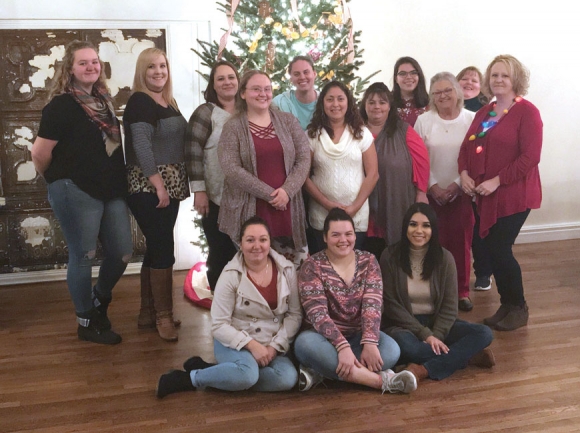Childcare facilities continue to serve front-line families
 The staff at Kid Connection Child Development Center in Canton are still working to provide much needed child care for front-line workers. Donated photo
The staff at Kid Connection Child Development Center in Canton are still working to provide much needed child care for front-line workers. Donated photo
As executive orders began piling up throughout March to close schools, restaurants, hotels and all other non-essential businesses, childcare facilities remained open. The essential nature of the business meant that even though it is a place where adults and children gather together in close quarters, it would have to adapt to continue its services.
The North Carolina Department of Health and Human Services required all childcare facilities to complete an Emergency Child Care Provider Application by March 31 in order to continue operations after that date. Any providers that did not complete the application by the deadline could turn in the application at a later time and resume services two days after submission. The application included, among other things, a testament that the provider could follow health, safety and operational guidelines North Carolina DHHS had outlined.
It was not required that childcare facilities close or remain open. Rather, each business had to assess their own abilities as well as the needs of their clients to determine whether they would remain in operation during the shutdown. Several childcare centers decided to remain open in order to serve the community during this crisis.
“We felt that we needed to continue to provide a service for our students so parents could continue to work. Many of our parents have no other childcare options,” said Belinda Marr, director of Long’s Chapel Child Enrichment Center.
Michelle Harris, director of communications at Haywood Community College, said the college also decided it needed to remain open during the pandemic.
“We [HCC Child Care Center] understand the importance of serving our community with this service, especially those serving on the frontline,” she said.
Related Items
“I had many families who continued to reach out with their concerns of not being able to find suitable care to allow them to work. Once I saw that we could open safely and with enough staff, that is what we did,” said Mary Moody, director of Kid Connection Child Development Center.
According to DHHS guidelines, each morning staff should take the temperatures of students and staff members, parents should drop children off at the door or from a car when they can be accompanied by staff, teachers should do health checks throughout each day and the frequency of cleaning and handwashing should be increased. Social distancing is more difficult, though enforced strictly during activities like meal and nap time.
“Social distancing is almost impossible with young children. We encourage activities that allow the children to work and play in as small of groups as possible. Even then, they do not fully understand why social distancing is necessary,” Moody said.
With many people out of work, or working from home, attendance has shifted at these childcare facilities. According to North Carolina Executive Order 121, childcare facilities “may only serve currently enrolled children if their parents/caregivers are considered essential workers, or if the child is receiving child welfare services, is homeless, or in unstable or unsafe living arrangements.” However, the order made clear that it is not the responsibility of childcare staff to determine whether a parent/caregiver is an essential worker. It is the responsibility of the family to self-identify as such.
At Long’s Chapel, Marr said the center has about half the attendance it had pre-Coronavirus Pandemic. All attending students are children of essential workers. Additionally, Long’s Chapel has decided to take on children of essential workers in their open spots and has enrolled six new children to date.
At Kid Connection in Canton, attendance has dropped to a third of pre-pandemic numbers. HCC Child Care Center has seen a similar drop in numbers. Most of the remaining students at both centers are the children of frontline workers.
North Carolina has also laid out a plan to give families emergency childcare subsidy. This means that childcare facilities will be reimbursed by the state for any families in its care that receive the subsidy. However, the facilities will not be reimbursed until May 15 for April services and June 12 for May services. So, while these subsidies are a huge relief to many families that need emergency childcare right now, they have been a strain on the centers themselves. At a time when childcare facilities need to keep a full staff in order to have a greater staff to child ratio, they are being forced to operate on a reduced budget until they are reimbursed by the state.
“It would have helped if the state would have considered the tight budget that childcare centers already operate on and it would have helped if they would have fronted us some of the money that we are expected to pay out of pocket with a drastically reduced revenue,” said Moody.
Staff members at these childcare centers report pride in the work they are doing to serve their community during this crisis. Despite the stress and nervousness so many people are feeling right now, “the staff is thankful that we are open and providing much-needed service for our families,” said Marr.
As for the children they serve, staff agree that they are incredibly resilient. Changes to routine can be hard for children. Several directors said they are trying to keep the schedules as normal as possible. At HCC Child Care Center staff said, “we still incorporate outside activities like we did prior to this situation to maintain our schedule and enjoy the many benefits of fresh air and playing creatively outside.”









